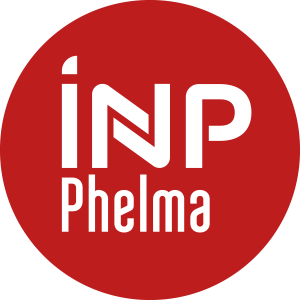Number of hours
- Lectures 12.0
- Projects 0
- Tutorials 12.0
- Internship 0
- Laboratory works 0
ECTS
ECTS 2.0
Goal(s)
This lecture aims to introduce the various families of materials from a comparative way. Ceramics, metals and alloys, polymers will be described successively with their characteristics and their applicability. This lecture will present from one part the relations between structure and electrical, magnetic and mechanical properties of materials and from another part a classification of polymers allowing an understanding of their properties.
LEVEL : basic in material science
Contact Elisabeth DJURADOContent(s)
• Electrical properties of ceramics (2h C/TD): Influence of temperature, of microstructure, of atmosphere and impurities on ionic conductivity of ceramics. Applications : heating elements, oxygen electrochemical pump, SOFC.
• Magnetic properties of ceramics (2hC/TD): spin moment, behaviour of substances in magnetic field, influence of temperature, superexchange, magnetic domains, hysteresis cycles. Applications of soft and hard magnetic materials.
• Mechanical properties of ceramics (4hC/TD) : Microstructures, physical properties, theoretical cleavage fracture strengh (Griffith), stress intensity factor and fracture toughness, subcritical crack growth rate, statistical of strength (Weibull), SPT diagrams, spontaneous microcracking, strenghtening of ceramics.
• Structural materials (8hC/TD)
• Polymers and composites (8hC/TD: Structure and classification of polymers, chemical synthesis, mechanical properties, viscoplasticity and elaboration, applications.
Prerequisites
Introduction to material science
Written exam (3h)
Examen Ecrit : 100%
- Métaux et alliages: J.Philibert, A.Vignes,Y.Bréchet,P.Combrade,"Métallurgie", Masson (1998)
- Polymères et composites: D.Van Krevelen, "Properties of polymers", Elsevier , (1990)
- Céramiques: M.Barsoum, "Fundamentals of ceramics", Mc Graw Hill (1997)
- "Electrochimie des solides", C. Desportes et al., Pug (1994)



